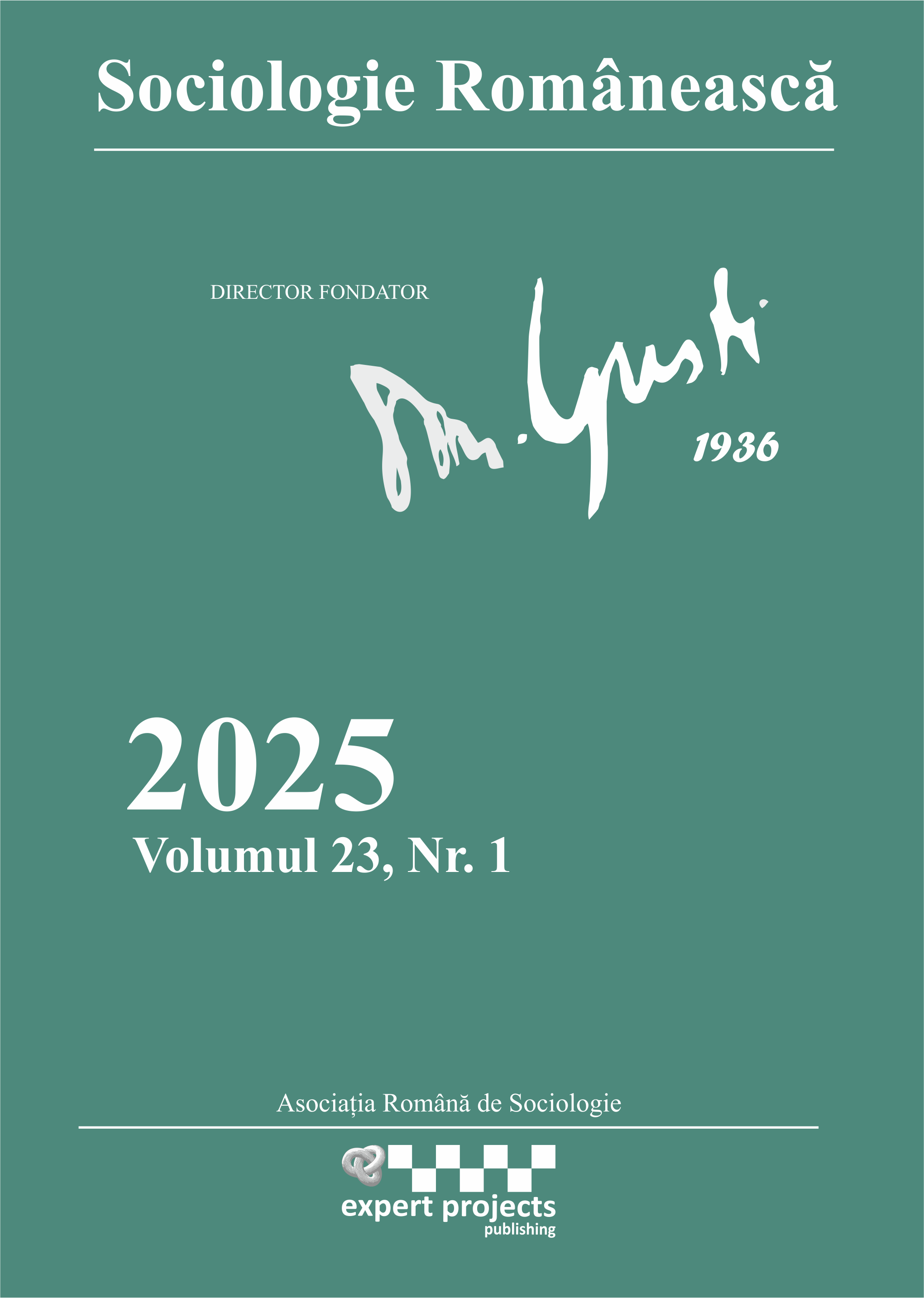The Gender Paradox in Romania: Pay Equality, Workforce Disparity
##plugins.themes.academic_pro.article.main##
Abstract
Romania's situation regarding gender equality is quite paradoxical: it has one of the lowest unadjusted genders’ pay gap in Europe, yet it holds a low position overall in gender equality among EU countries. This contradiction highlights serious inequalities in areas like labour force participation, political representation, education, and leadership roles. Despite minimal differences in gender pay, societal norms, occupational segregation, and discriminatory practices intensify gender gaps in employment and leadership. This article explores various aspects of gender inequality in the workplace, including payment disparities, workforce participation, and educational attainment. In addition, it will examine how Romania’s legal framework and government policies, such as maternal leave regulations, address these inequalities and aim to support gender equality, particularly in helping women balance work and family responsibilities. Challenging traditional gender norms, expanding access to education, and strengthening social protections are essential in addressing Romania's gender disparities. Redistributing care responsibilities and promoting flexible work arrangements are vital steps in this process. By tackling these inequalities, policymakers can simultaneously advance gender equality and align with the broader objectives of sustainable development, ensuring both immediate and lasting societal benefits.
##plugins.themes.academic_pro.article.details##
References
Băluță, I., & Tufiș, C. (2021). Political Representation of Women in Romania. București: Friedrich-Ebert-Stiftung România.
Băluță, O. (2013). Democratic Governance, Country Case Study: Romania. United Nations Development Programme. Available at https://aceproject.org/ero-en/regions/africa/DZ/undp-gender-and-elections-in-romania-2013.
Brechenmacher, S., & Hubbard, C. (2020). Breaking the Cycle of Gender Exclusion in Political Party Development. Carnegie Endowment for International Peace. Available at https://carnegieendowment.org/research/2020/03/breaking-the-cycle-of-gender-exclusion-in-political-party-development?lang=en, accessed on 20 2025.
Caragea, N., & Hrehorciuc-Caragea, A. (2016). Gender Disparities in the Romanian Society. ResearcgGate. Available at https://www.researchgate.net/publication/331927896_Gender_Disparities_in_the_Romanian_Society.
Christian, M. (2020). The Gender of Communism. Encyclopédie d'histoire numérique de l'Europe. Available at https://ehne.fr/en/node/12335.
European Union. (2023). 2023 report on gender equality in the EU. Luxembourg: Publications Office of the European Union.
Faragalla, W. A., Tiron-Tudor, A., Stanca, L., & Deliu, D. (2023). Gender Discrimination Insights in Romanian Accounting Organisations. Accounting Organisations. International journal of environmental research and public health. Available at doi: https://doi.org/10.3390/ijerph20010797.
Gabor, A. (2021). Women's Representation in Romanian Politics. The Friedrich Naumann Foundation for Freedom Romania. Available at https://www.freiheit.org/romania-and-republic-moldova/womens-representation-romanian-politics.
Garcia, R., & Jennifer, T. (2020). Rethinking the Domestic Division of Labour: Exploring Change and Continuity in the Context of Redundancy, Sociology, 55(2), 300-318. Available at https://doi.org/10.1177/0038038520947311.
Gheorghe, G. (2016). Eurostat: Romania posts biggest economic growth in EU in 2016 Q2. Business Review. Available at https://business-review.eu/news/eurostat-romania-posts-biggest-economic-growth-in-eu-in-2016-q2-115455.
Gillet, K. (2017). Protesters in Romania denounce plan to decriminalise misconduct offences. The Guardian. Available at https://www.theguardian.com/world/2017/feb/01/romanians-protests-emergency-law-prisoner-pardons-corruption.
Grimshaw, D., & Rubery, J. (2015). The motherhood pay gap: A review of the issues, theory and international evidence. Geneva: International Labour Office, Inclusive Labour Markets, Labour Relations and Working Conditions Branch.
Gudin, A. (2023). Woman at Cotroceni: A Shifting Perspective in Politics. nineoclock.ro. Available at https://nineoclock.ro/2023/11/09/shifting-perspectives-romanians-female-president-inscop-poll/.
Jarska, N. (2021). Women's Work and Men: Generational and Class Dimensions of Men’s Resistance to Women’s Paid Employment in State-Socialist Poland (1956-1980), Aspasia, 15, 81-98. Available at doi:10.3167/asp.2021.150106.
Jones, M., Mlcek, S., Healy, J., & Bridges, D. (2019). Gender Dynamics in Social Work Practice and Education: A Critical Literature Review, Australian Social Work, 72, 62-74. Available at doi:10.1080/0312407X.2018.1524919.
Kilgman, G. (1998). The politics of duplicity: Controlling reproduction in Ceaușescu’s Romania. California: University of California Press.
Kouta, C., & Kaite, C. (2011). Gender Discrimination and Nursing: Α Literature Review, Journal of professional nursing: official journal of the American Association of Colleges of Nursing, 27, 59-63. Available at doi:10.1016/j.profnurs.2010.10.006.
Lebid, M. (2021). Childcare policies and gender equality in the post-Soviet Eastern European countries. Central European University.
Lomazzi, V., Israel, S., & Crespi, I. (2019). Gender Equality in Europe and the Effect of Work-Family Balance Policies on Gender-Role Attitudes, Social Sciences, 8(1). Available at doi:10.3390/socsci8010005.
Marinescu, R. (2018). Representing Gender in Communist and Postcommunist Romania, Diversité et Identité Culturelle en Europe, 27-40.
Petrescu, C. (2014). A Genderless Protest: Women Confronting Romanian Communism, Annals of the University of Bucharest / Political science series, 79-101.
Popescu, A., Tindeche, C., Mărcuța, A., & Mărcuța, L. (2022). Rural area in Romania - Discrepancies versus urban areas and European Union, Scientific Papers Series Management, Economic Engineering in Agriculture and Rural Development.
Robayo-Abril, M., Chilera, C. P., Rude, B., & Costache, I. (2023). Gender Equality in Romania: Where Do We Stand? - 2023 Romania Gender Assessment. World Bank Group. Available at https://www.worldbank.org/en/country/romania/publication/gender-equality-in-romania-where-do-we-stand-2023-romania-gender-assessment.
Sănduleasca, B., Matei, A., Ghența, M., & Bădoi, D. (2015). Roluri de gen și implicații în realizarea echilibului între viața profesională și viața de familie. București: Editura Universitară. Available at doi:10.5682/9786062803865.
Simionescu Vlăsceanu, M. (2023). Exploring the Gendered Dynamics of Work and Family Life. A Secondary Descriptive Analysis in the Romanian Context, Sociologie Românească, 22(1), 30-50.
Toma, A. (2025). Romanian women in work: what jobs do they have. Resources.nploy.net. Available at https://resources.nploy.net/nploy-hub/romanian-women-in-work-what-jobs-do-they-have.
UN. (2023). United Nations Sustainable Development. Transforming our world: the 2030 Agenda for Sustainable Development. Available at https://sdgs.un.org/2030agenda.
UNAIDS. (2012,). Impact of the global economic crisis on women, girls and gender equality. United Nations Digital Library. Available at https://digitallibrary.un.org/record/3951773?v=pdf.
Voicu, M., & Voicu, B. (2002). Gender values dynamics: Towards a common European pattern? Romanian Journal of Sociology, 13, 42-63.

